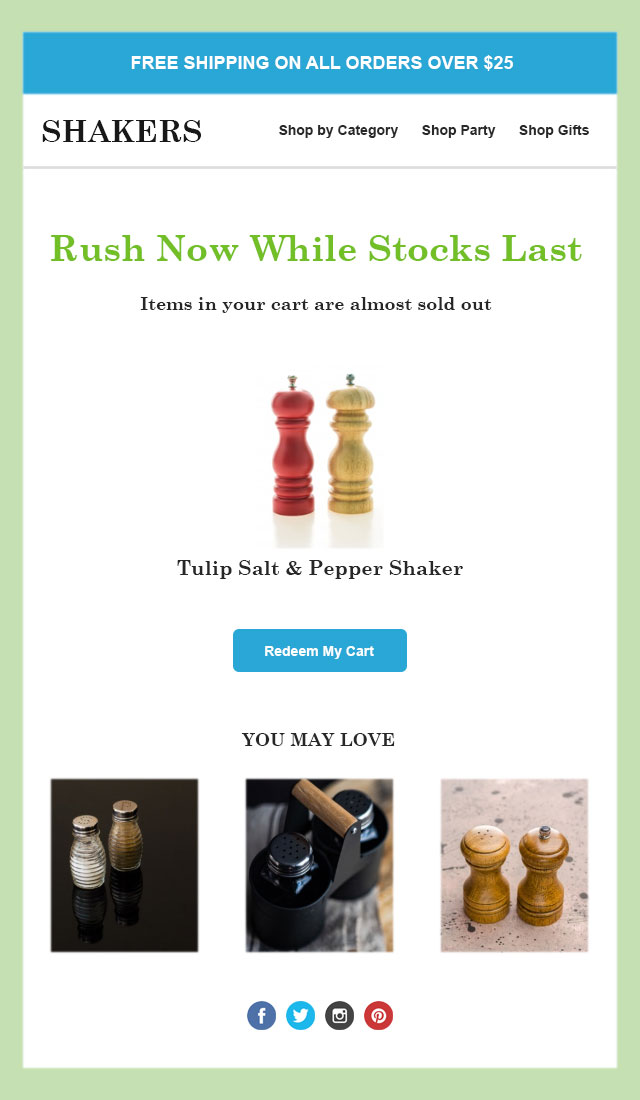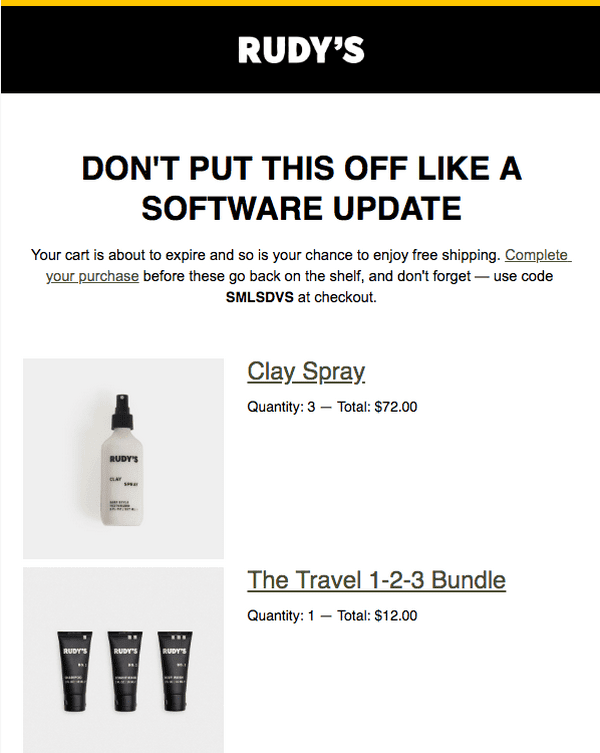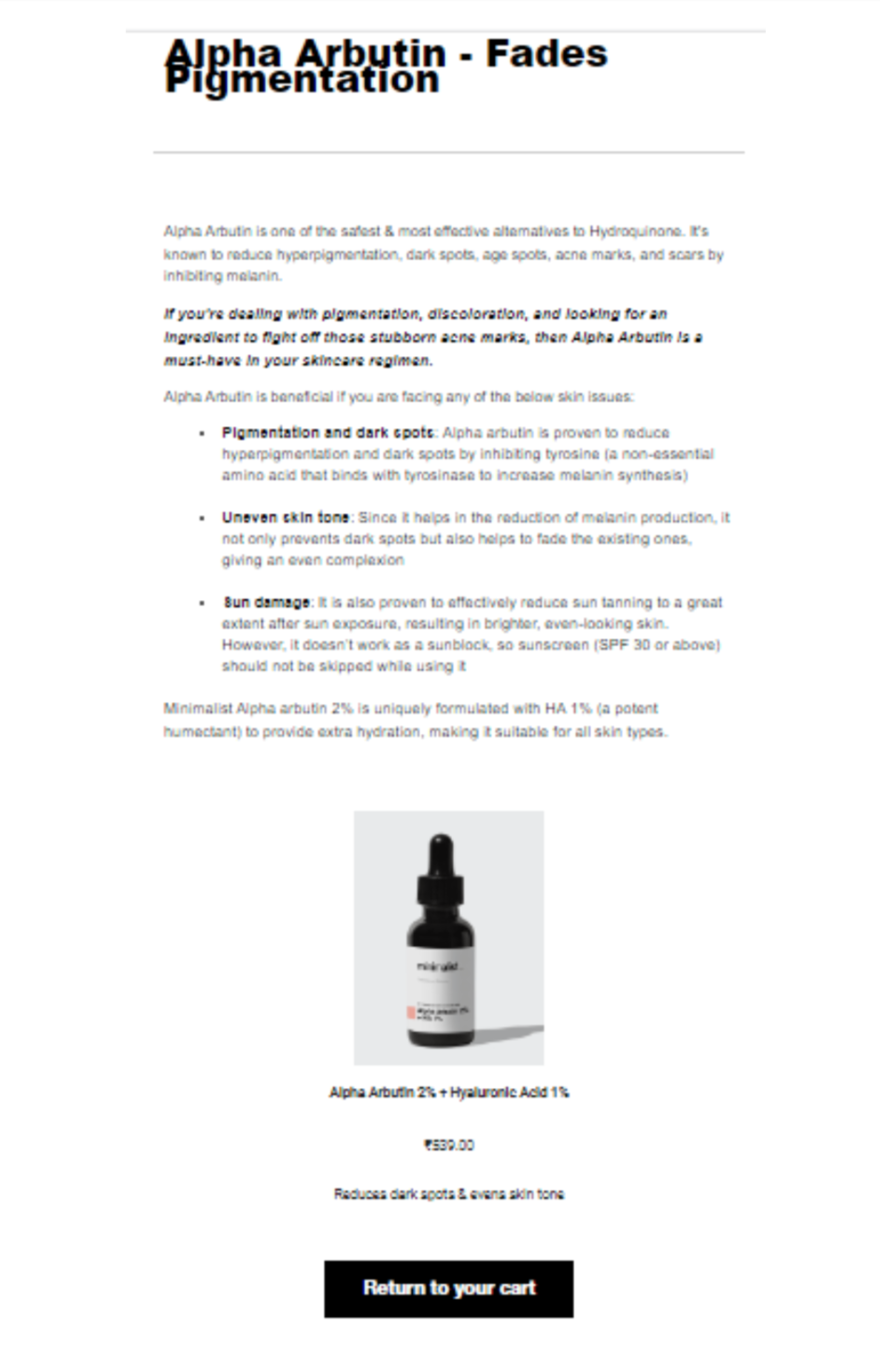On average, the cart abandonment rate across all industries is 69.57%. And e-commerce brands lose $18 billion each year because of this.
To combat this, most brands are already sending out abandoned cart reminders emails.
However, the question really is – Is everyone actually converting these abandoned carts into sales? Are they able to reduce their losses and actually up their game?
The answer is NO.
That’s because they don’t know of THIS email cart recovery strategy that we’re about to tell you in this article.
What is email cart recovery?
For most email cart recovery simply refers to sending a reminder about the products left behind by a shopper. But in reality, it actually means putting consumer psychology and their purchase intent to work to create a series of emails that will nudge them slowly towards completing the purchase – which is where most stores’ strategy falls flat.
It’s a follow-up email sent to a customer who showed an interest in buying a product(s) and added it to their cart but left the store without actually completing the purchase.
After having worked with leading e-commerce stores, here’s the email cart recovery strategy we have seen to work better than those one-off, same old reminders.
Also read: What are cart recovery emails and why are they important
The email cart recovery strategy you need this year
1. Start off with a simple and gentle reminder
When a customer adds something to their cart, there is obviously some purchase intent involved – even if it’s not a strong one.
You need to be able to capture this intent and amplify it.
And so, you can send a reminder email. This acts as a slight nudge to persuade them to complete their incomplete order.
However, you do not want to seem too desperate while doing so either. This is why you need to set a minimum ‘waiting period’ and then send out the email.
This time period could vary from industry to industry.
For instance, 20 mins is a good waiting period for most industries.

2. Share social proof
Yes, you’ve sent the cart abandoner a reminder to complete their purchase. But, just that will not be enough in most cases.
You need to persuade them.
Establishing trust and credibility is everything in the e-commerce sphere. And what better way to accomplish this than using social proof.
Social proof can be anything – product reviews, media mentions, influencer endorsement, etc; so you should try it all.
Social proof works because for an individual to like or accept something, what other people think of the same has a massive effect.
And that is exactly what you need to integrate into your email cart recovery as well.

3. Create a sense of FOMO around the abandoned product
While sending out these cart recovery emails, inform the consumer that the product they’ve been eying is selling out like hotcakes.
You need to convince them that if they don’t complete this purchase right away, it will sell out and they won’t get their hands on it – ever.

4. Entice them with an irresistible offer
As an e-commerce store owner, you do not want to miss out on any sales opportunity.
So, if the customer is not convinced even after the previous set of emails you rolled out, it’s time to make them an offer they simply cannot resist.
An offer need not be a discount only. You can also explore other offers like sending freebies, offering store credits for a future purchase, express shipping, free/discounted shipping.
Nevertheless, take your time in sending these offers. 4-5 days is a good bargain because you don’t want to seem too desperate either. To take it a notch higher, you can add statements like ‘Specially curated for you’ or ‘Just for you’ to add a pinch of personalization in these cart recovery emails.

5. Create FOMO around the offer
Most consumers today expect a discount when they abandon their carts. To a point, this has become a norm. Every other brand seems to be using this tactic.
However, despite providing them with exciting discounts, conversions still seem stagnant.
How do you turn this around then?
Make these people realise that they do not have all the time in the world to grab this exciting offer. Along with providing discounts, create urgency around it. That is, let the consumer know that the given discount is only valid for let’s say, 24 hours.

6. Offer help
This might also be the ideal opportunity to converse with your customer.
Reach out asking if they need help in making the purchase or if they are confused.
For instance, if you run an online makeup store, you can provide them with help in choosing the right foundation. You can ask about their skin colour, tone, undertone, skin texture, and so on. This will help you provide them with expert advice and convince them to make that purchase.
You can also make the most of this opportunity to cross-sell and upsell. For instance, while recommending the right foundation, you can also persuade them to try out your beauty blenders.

7. Send product recommendations
Despite all the mails you sent out, if someone has still not come back to complete that purchase, chances are they may have bought the product from another store or are no longer interested.
You can still use this opportunity to increase conversions. You can send them personalized product recommendations in the email and entice them into buying those instead.

Conclusion
A comprehensive email cart recovery strategy is important when you’re battling so much competition. So make sure you cover all the stages of the funnel and measure the impact each has.
You also need to use the right tools to execute these strategies.
Your cart recovery emails need to adapt to the changing consumer behaviour too. As an e-commerce store, you don’t want to leave money on the table. You need to be able to convert as many visitors into customers as possible.
Supercharge emails for your Shopify store with RetainIQ today. RetainIQ is co-founded by professionals who collectively have more than 25 years of experience in e-commerce growth for big brands.

